SWISS HISTORIC HOTELS



Tutte le brochure a colpo d’occhio. All booklets at a glance. MySwitzerland.com/brochures

Questa brochure è perfetta per chi cerca qualcosa di particolare, perché gli Swiss Historic Hotels sono stati plasmati dallo scorrere del tempo. Ognuno conquista per il carattere unico e l’energia che emana, in un gioco di contrasti tra vecchio e nuovo. Divertiti a spulciare tra le pagine del tempo!
E non finisce qui! Se ad esempio desideri immergerti nelle tradizioni svizzere e in più hai una passione per la cucina, ti consigliamo la brochure dei Typically Swiss Hotels. Se invece viaggi con tutta la famiglia e ti piacciono le favole per bambini, sarai entusiasta della brochure sui Family Hotels, mentre se cerchi il posto giusto in cui tutti i tuoi collaboratori possano concentrarsi su un futuro di successo, nella brochure degli Inspiring Meeting Hotels troverai ciò che fa al caso tuo.
I f you’re looking for something extraordinary, you’ll find your hideaway in this booklet, since the course of time has shaped the Swiss Historic Hotels. Each inspires guests with its own character and impressive appearance, playfully combining old and new. We hope you enjoy travelling through time.
And there is so much more still to be discovered!
If you’re looking to immerse yourself in Swiss tradition and enjoy cooking, we highly recommend the booklet on Typically Swiss Hotels. If you’re travelling with the entire family and like children’s stories, you’ll love this booklet on Family Hotels. And if you want to find the right focus for a successful future for the whole company, you’ll find it in the booklet on Inspiring Meeting Hotels.
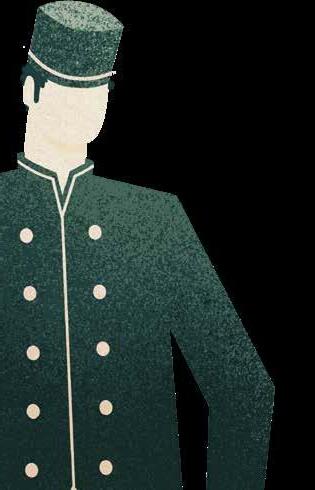
Viaggio nel tempo. Time travel.
Caratteristiche degli alloggi. Accommodation criteria.
1 – 61 Swiss Historic Hotels
Mappa. Map.
Legenda. Legend.
Intraprendiamo un viaggio nel tempo, attraverso le varie epoche del turismo svizzero. Faremo tappa nei luoghi in cui transitava chi viaggiava per ragioni commerciali, da nord a sud, da est a ovest. Poi ci soffermeremo sugli hotel signorili della Belle Époque, luoghi di ritrovo degli esponenti dell’alta società e degli intellettuali d’Europa. Infine faremo una sosta negli anni ’30 del XX secolo, gli anni in cui fioriva il Movimento moderno o Neues Bauen, stile precursore del modernismo, spazio foriero di nuove idee e visioni. Come testimoni di queste epoche, gli Swiss Historic Hotels ne tramandano lo stile e la storia fino ai giorni nostri.
Join us on a journey through time, as we visit the different eras of Swiss tourism. We will stop off to meet those people who travelled the major trade routes – from north to south and from east to west. We will then pay a visit to the stately hotels of the Belle Époque, where members of high society rubbed shoulders with the intellectuals of Europe. Finally, we will take a close look at the 1930s, which was when the “Neues Bauen” (New Building) movement pioneered modernity, creating spaces for new ideas and visions. As contemporary witnesses Swiss Historic Hotels are testament to the various eras, carrying on their styles and stories into the present.
In epoca romana, il territorio che oggi chiamiamo Svizzera era solcato da due importanti vie di transito attraverso le Alpi: una era quella del Gran San Bernardo tra la Val d’Aosta, la Valle del Rodano e il Lago di Ginevra, l’altra negli attuali Grigioni attraverso il Passo Septimer dal Lago di Como, passando per Coira fino al Lago di Costanza. In seguito alla caduta dell’Impero Romano nel V secolo, tante vie caddero in uno stato di abbandono a causa dell’interruzione di gran parte degli scambi commerciali. Bisognerà attendere il Medioevo prima che nuovi collegamenti venissero istituiti nelle regioni alpine, per esempio per le campagne militari, pellegrinaggi, nonché per il trasporto di sale e metalli nelle zone con una tradizione mineraria.
In Roman times there were two important transit routes over the Alps in what is now Swiss territory: one over the Great St. Bernard Pass between the Aosta Valley, the Rhône Valley and Lake Geneva, and the other in modern-day Graubünden across the Septimer Pass from Lake Como via Chur to Lake Constance. With the fall of the Roman Empire in the fifth century, trade came to a standstill for long stretches of the routes, and many roads fell into a bad state of repair. It was not until the Middle Ages that new transit routes were established in the Alpine regions, for example for military campaigns or as pilgrimage routes, but also for the transportation of salt and ore in areas with a mining tradition.


Lungo le grandi vie di transito vennero costruiti anche i primi edifici per lo stoccaggio delle merci e la sistemazione dei viaggiatori. Nello stesso periodo, le Alpi europee furono disseminate di mulattiere che permettevano di attraversarne i numerosi valichi; contemporaneamente su queste vie sorse una miriade di nuovi insediamenti e mercati. Nel XIV secolo, nella Confederazione, con il Passo del Gottardo, nacque anche un importante asse nord-sud. Un altro attraversamento alpino cruciale era il Passo del Gran San Bernardo, nel Vallese, mentre il Passo dello Spluga e il Passo del San Bernardino nei Grigioni divennero ulteriori punti nevralgici per il trasporto merci tra il territorio italico e la Svizzera.
HOTEL WEISS KREUZ A Splügen, insediamento situato all’inizio del passo sul versante svizzero, la prima locanda risale al XIV secolo. Fu a lungo un luogo molto amato dai viaggiatori che percorrevano questa mulattiera molto frequentata.
The first buildings for storing goods and accommodating travellers were built along major routes. At that time, mule tracks were spread over numerous pass crossings over the European Alps, where various new settlements and market places emerged. In the 14th century, an important connection between north and south was created in the Swiss Confederation with the opening of the route over the Gotthard Pass. In Valais, the Great St. Bernard Pass was one of the most important Alpine crossings. The San Bernardino Pass and Splügen Pass in Graubünden were also heavily used for the movement of goods from Italy to Switzerland and vice versa.
HOTEL WEISS KREUZ There was already an inn in Splügen, the settlement at the mouth of the pass crossing on the Swiss side, as far back as the 14th century. For a long time it was a popular place along the busy mule track.
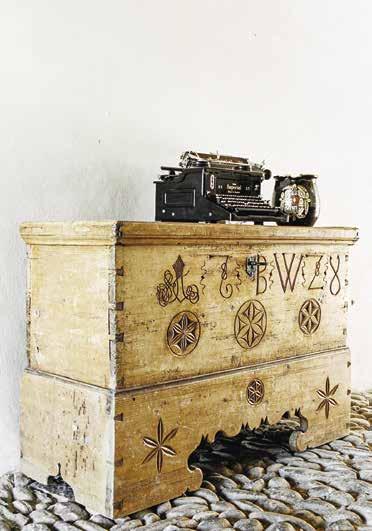
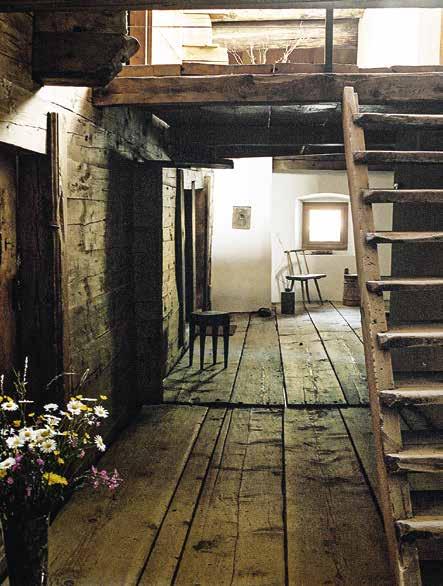
Perse di importanza dopo il 1800, quando nel nuovo Cantone dei Grigioni, sul passo dello Spluga, venne costruita una strada per le carrozze che aggirava il centro abitato. Il vecchio edificio fu poi utilizzato per decenni come casa rurale, finché alla fine degli anni ’90 venne ristrutturato con il patrocinio del Servizio monumenti dei Grigioni, della Fondazione «Pro Splügen» e di Patrimonio svizzero e trasformato in un hotel. Dai locali della vecchia locanda vennero ricavate camere degli ospiti con bagni privati, mentre sopra la stalla, quello che era il fienile divenne un’ampia sala da pranzo modernamente arredata. Ora si entra nell’edificio dalla grande apertura sulla facciata, un tempo punto di accesso alla casa rurale. Con gli interventi di ristrutturazione e ammodernamento effettuati, l’Hotel Weiss Kreuz unisce sapientemente vecchio e nuovo creando una piacevole atmosfera caratteristica.
After 1800, following the construction of the coach road over the Splügen Pass through the newly created canton of Graubünden, the inn lost its importance because the navigable route now led right past the centre of the village. As a result, the old building was used as a farmhouse for several decades. In the late 1990s, the building was renovated and transformed into a hotel with the support of Graubünden’s historical monuments conservancy, the “Pro Splügen” Foundation and the Swiss Heritage Society. Guest rooms with modern wet rooms were created within the original spaces of the old inn. The large dining room with modern furniture was situated in the former hay loft above the stable. Since then, the large opening in the façade – the historic entry to the farmhouse – has served as the hotel’s entrance. The Hotel Weiss Kreuz atmospherically combines old and new styles, thanks to modern construction measures.
Arrive in historical style: by horse-drawn carriage Viaggiare come un tempo: calesse Di più More

The heyday of tourism in the Belle Époque
Nel periodo della cosiddetta Belle Époque, che va dagli anni ’80 dell’Ottocento fino allo scoppio della Prima Guerra Mondiale nel 1914, il modo di viaggiare cambiò: se prima a spostarsi erano persone singole o piccoli gruppi, si aprirono ora le porte del turismo di massa. Il pioniere e grande promotore di questa nuova forma del viaggiare fu l’inglese Thomas Cook, che nel 1863 organizzò un primo viaggio di gruppo in Svizzera. L’incremento dei flussi turistici incentivò tra l’altro la costruzione di infrastrutture, come strade e sentieri, nonché la nascita di nuovi mezzi di trasporto. La rete stradale si sviluppò prima tra i grandi centri urbani dell’Altipiano, per raggiungere poi anche le zone alpine. Inoltre, si iniziarono a vedere i primi battelli a vapore sui laghi svizzeri, che rappresentavano una vera attrazione turistica. A partire dall’ultimo quarto del XIX secolo, arrivarono anche le strade ferrate a velocizzare gli spostamenti tra le diverse località. Con l’invenzione della cremagliera, la ferrovia riuscì addirittura a scalare le cime; la prima a essere raggiunta in Svizzera fu il Rigi nel 1871. Ma fu solo con la costruzione della cremagliera più ripida del mondo sul Pilatus nel 1890 che le ferrovie di montagna conobbero un vero e proprio boom nelle Alpi svizzere, con progetti uno più audace dell’altro. Tra questi c’era anche la ferrovia che avrebbe dovuto collegare il Kleine Scheidegg nell’Oberland bernese alla vetta della Jungfrau, i cui lavori, iniziati nel 1896, furono poi interrotti nel 1912 per problemi finanziari.
The so-called Belle Époque – from the 1880s to the outbreak of the First World War in 1914 – saw a move away from travel by adventurous individuals or small groups and towards mass tourism. The start of this trend was marked by Englishman Thomas Cook, who travelled to Switzerland with a group for the first time in 1863 and strongly promoted this type of travel. The growing flow of tourists led, among other things, to the construction of infrastructure, such as roads and trails, and the emergence of new means of transportation. Road construction first developed between the larger cities on the Swiss Plateau, later also reaching the Alpine regions. Steamboats also began to ply their trade on Switzerland’s lakes, attracting great interest among tourists. From the last quarter of the 19th century onwards, railways were also a factor in making towns quickly and easily accessible. The invention of the cogwheel system meant that the railway was even able to climb mountain peaks, which first happened in Switzerland on the Rigi in 1871. But it was not until the steepest cog railway in the world was built on Mount Pilatus in 1890 that a boom in mountain railway projects was triggered in the Swiss Alps, each vying with the next in terms of boldness and superlative engineering. This also included the planned construction of a railway from the Kleine Scheidegg in the Bernese Oberland to the summit of the Jungfrau, which began in 1896, but which had to be put on hold in 1912 due to financial problems.

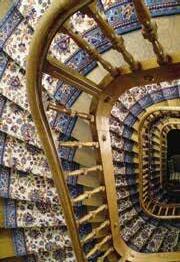


La Belle Époque segnò anche l’inizio di un’intensa attività di costruzione di hotel, che nelle regioni turistiche della Svizzera continuerà fino alla Prima Guerra Mondiale. Le strutture si moltiplicarono, tanto che in alcuni luoghi si diceva crescessero «come funghi dopo una pioggia nella calura estiva». Lo stile architettonico di questi hotel era molto spesso una combinazione di elementi di epoche passate, per esempio dal Rinascimento al Barocco, che diede vita a un nuovo stile passato alla storia dell’architettura con il nome di «storicismo».
HOTEL BELLEVUE DES ALPES Sul Kleine Scheidegg, il valico ai piedi della triade composta da Eiger, Mönch e Jungfrau, una baita alpina operava nella stagione estiva già agli albori del XIX secolo. Di lì a poco la modesta osteria di montagna fu acquistata da Christian Seiler, un albergatore originario della valle di Lauterbrunnen. Alla fine del secolo suo figlio Adolf realizzò il maestoso Grand Hotel Bellevue, che trasse grande vantaggio dall’inaugurazione nel 1893 della linea ferroviaria Wengernalpbahn che collegava Grindelwald a Wengen e Lauterbrunnen passando appunto per il Kleine Scheidegg.

The Belle Époque was marked by the intensive construction of hotels in many places, a process that continued in Switzerland’s tourist regions until the outbreak of the First World War. It was reported that the number of hotels increased in some places “like mushrooms after a warm rain in summer”. The architectural style of these hotels usually involved a combination of elements from earlier times – the Renaissance and the Baroque for example – which were merged into a new style, known to architectural historians as “historicism”.
HOTEL BELLEVUE DES ALPES On the Kleine Scheidegg, the pass crossing at the foot of the triumvirate of the Eiger, Mönch and Jungfrau, a summer hostelry was established in an Alpine hut in the early 19th century. This modest mountain inn soon came into the hands of Christian Seiler, a hotelier from the Lauterbrunnen Valley. His son Adolf built the imposing grand hotel Bellevue on the site towards the end of the century.

Poco dopo, come concorrenza, vicino sorse l’Hotel Des Alpes che Seiler riuscì ad acquisire nel 1912. Nel 1929 le due strutture furono unite dando vita al doppio hotel Bellevue des Alpes, che per la prima volta rimase aperto anche in inverno. Entrambi gli edifici sono ancora oggi in buone condizioni grazie all’attenta manutenzione del tessuto edilizio effettuata nel corso degli anni. Le camere storiche al piano terra e gli ampliamenti apportati negli anni ’20 conservano l’eleganza impressa in quell’epoca in pieno spirito modernista. Le camere sono arredate con mobili d’epoca e dotate di bagni dal fascino nostalgico. L’attuale proprietario Andreas von Almen, discendente della famiglia Seiler, e sua moglie Silvia gestiscono il prezioso patrimonio storico con cura e gusto.
This construction project was strongly supported by the Wengernalp Railway, which opened in 1893, linking Grindelwald via the Kleine Scheidegg to Wengen and Lauterbrunnen. Adolf Seiler managed to acquire the Hotel Des Alpes, which was built next door as a competitor establishment shortly after the railway was built, in 1912. In 1929 he merged the two hotels to form the Bellevue des Alpes and launched the first winter season. Today, the good state of historical preservation in both buildings can be traced back to years of careful maintenance of the structural fabric. The historic rooms on the ground floor and the additions dating back to the 1920s are sophisticated reminders of the modernist style that was all the rage at that time. The guest rooms feature period furniture and nostalgic bathrooms. As a descendant of the Seiler family, the current owner Andreas von Almen and his wife Silvia have carefully maintained this precious architectural heritage.
Arrive in historical style: by train Viaggiare come un tempo: ferrovia Di più More

Negli anni ’20 del secolo scorso uno stile architettonico nuovo e radicale prese piede in tanti Paesi occidentali. Noto come Movimento moderno, trovò terreno fertile soprattutto in Austria, in Alto Adige e in Germania, tre regioni confinanti con la Svizzera. Per lo sviluppo di questo canone di stile economico svolsero un ruolo chiave l’introduzione del calcestruzzo armato come materiale da costruzione, la diffusione della produzione in serie, nonché l’integrazione della moderna impiantistica, per esempio per il riscaldamento, l’aerazione e i sanitari.
In the 1920s, a new, radical architectural style found its way into many Western countries. The design known as Neues Bauen was particularly popular in Austria, South Tyrol and Germany, three regions neighbouring Switzerland. Reinforced concrete became popular as a new building material at this time, and the development of mass production methods was the key to economically efficient construction. The incorporation of the latest technology – such as heating, ventilation and sanitary facilities – was also important.

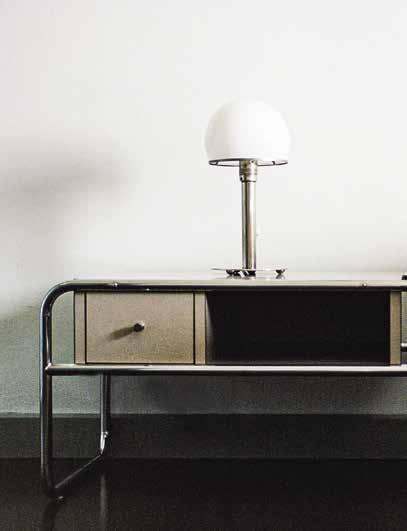
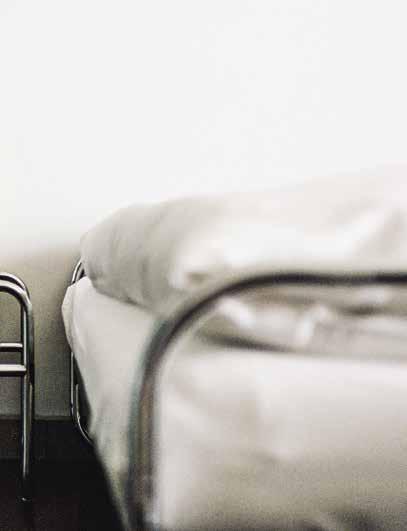
Gli architetti del Movimento moderno disegnavano «dall’interno verso l’esterno».
A differenza degli architetti del movimento storicista di fine XIX secolo, che si lasciavano guidare dalla simmetria e dall’assialità classica, il Movimento moderno prediligeva facciate dalle forme dinamiche e tetti dai contorni movimentati. Si lavorava soprattutto con forme chiare, volumi, tetti piani, piante razionali, composizioni asimmetriche, grandi aperture e finestre a nastro sulle facciate, bandendo ornamenti e decorazioni. Gli architetti del Movimento moderno disegnavano «dall’interno verso l’esterno», per cui le facciate erano il rivestimento esterno della pianta definita all’interno. Per alcuni analisti, questo modo di procedere modificava radicalmente il lavoro di progettazione architettonica, tanto da poter parlare di una nuova era. In Svizzera nuovi edifici, adibiti perlopiù a sanatori, furono eretti soprattutto nei centri di cura delle malattie polmonari della Svizzera orientale di Arosa e Davos (Grigioni) e a Montana e Leysin, nella Svizzera occidentale. Ma anche alcuni hotel furono realizzati nello stile del Movimento moderno.
HOTEL MONTE VERITÀ L’hotel situato sul Monte Verità, sopra Ascona, è una di queste rare strutture realizzate in Svizzera nello stile del Movimento moderno. Già nel 1900 questa località era nota per ospitare una colonia di artisti riformisti che coltivavano ideali anticapitalistici. In abiti riformisti e con i capelli lunghi, i fondatori si dedicavano insieme al giardinaggio e al lavoro agricolo o si rilassavano facendo il bagno nudi.
In contrast to the architects of historicism in the late 19th century, who were guided by symmetry and classicism, dynamically modelled façades and sweeping roofscapes were among the characteristic architectural elements in the Neues Bauen era. Clear shapes and volumes, flat roofs, rational floor plans, asymmetrical compositions as well as large openings and strip windows in the façades were key features of the style. Ornamentation and decoration were consistently avoided. Neues Bauen architects designed their buildings “from the inside out”, so their façades appeared as the outer skin of the floor plan defined on the inside. Some analysts described these radical structural and design changes as an actual paradigm shift in architecture. New buildings were built, primarily as sanatoriums, in the eastern Swiss health resorts of Arosa and Davos (Graubünden) as well as in Montana and Leysin in Western Switzerland. At the same time, however, a number of hotels in the Neues Bauen style were also built.
HOTEL MONTE VERITÀ The hotel on Monte Verità, the “Mountain of Truth” above Ascona, is one of the few establishments that appear in the Neues Bauen style in Switzerland. The hilltop site near Ascona had already become known around 1900 as the location of a reforming, anti-capitalist artists’ colony. Together, the founders engaged in horticulture and agriculture wearing reform clothing styles with long hair and sought relaxation in nude bathing.
Neues Bauen suggests designing buildings “from the inside out”.





Quando nel 1926 il banchiere olandese Eduard von der Heydt venne a sapere di questa colonia, decise di acquistare l’appezzamento e di farvi erigere un hotel progettato dall’architetto di Düsseldorf Emil Fahrenkamp. Lo spirito del Movimento moderno si evince dal tetto piano calpestabile, dalle profonde logge sporgenti e dalle grandi superfici vetrate, nonché dagli elementi luce, aria e igiene. Nel 1964, per disposizione testamentaria del suo fondatore, la proprietà del Monte Verità passò al Canton Ticino, che nel 1989 la cedette a sua volta a una fondazione appositamente istituita (Fondazione Monte Verità). L’architetto ticinese Livio Vacchini aggiunse poi un nuovo auditorium con ristorante. Nel 2007 / 08, con il supporto di esperti internazionali, la struttura alberghiera ben conservata di Fahrenkamp fu sottoposta a lavori di ristrutturazione che riportarono il complesso architettonico e gli oggetti delle camere (letti, tavoli, sedie e lampade) al loro splendore originario.
When Dutch banker Eduard von der Heydt became aware of this colony in 1926, he immediately acquired the property and had a new hotel built by Düsseldorf architect Emil Fahrenkamp. This building has an accessible flat roof, deep loggias in front and large windows, a testament to the zeitgeist of Neues Bauen, which also focused on light, air and hygiene. In 1964, Monte Verità joined the canton of Ticino according to the will of the founder, and in 1989 it was transferred to a foundation set up specifically for this purpose (Fondazione Monte Verità). Under the guidance of Ticino architect Livio Vacchini, a new lecture hall with a restaurant was added to the existing complex. Fahrenkamp’s well-preserved hotel building was restored in 2007 / 08 with the support of international experts. The entire building and the furnishings in the guest rooms (beds, tables, chairs and lamps) were restored according to the original specifications.

In ogni Swiss Historic Hotel passato e presente si incontrano in modo unico. Un ambiente intriso di carattere si unisce a una cordiale ospitalità messa in pratica da decenni.
> 30
Edificio centrale di oltre 30 anni
p
Tradizione di ospitalità consolidata nel tempo
Testati da una giuria di esperti, gli Swiss Historic Hotels soddisfano i seguenti criteri: Main building more than 30 years old
Hospitality business established over a representative time span
Atmosfere storiche e architettura significativa
Historic atmosphere and significance of architecture

Every Swiss Historic Hotel is a unique synthesis of past and present – a distinctive setting filled with the warm hospitality we have come to expect over many decades. The Swiss Historic Hotels, reviewed by an expert jury, fulfil the following criteria:
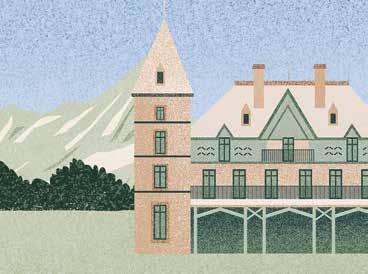
Ambienti, illuminazione e mobili ispirati per lo più agli originali
Eventuali ristrutturazioni sotto tutela delle Belle Arti Rooms, lighting and furniture primarily based on the historic original
Structural changes respect conservation requirements
Libro e buoni sono disponibili online. — Book & vouchers are available online.
Il libro presenta cinque viaggi stagionali appetitosi e stimolanti da uno Swiss Historic Hotel all‘altro.

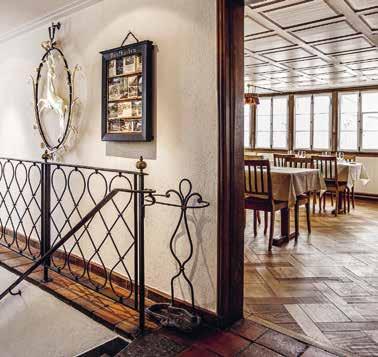
www.swiss-historic-hotels.ch
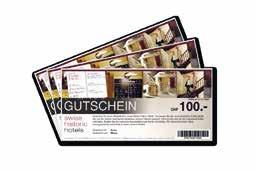

REGION +41 (0)32 625 10 10 info@lacouronne-solothurn.ch lacouronne-solothurn.ch
Nel cuore della città vecchia, questo generoso edificio barocco coniuga charme francese con elementi d’epoca, artigianato tradizionale e mobili dal design moderno. La Couronne è il secondo ristorante più antico della Svizzera.
In the heart of the old town, the spacious Baroque town house brings together French charm, historic touches, traditional craftsmanship and contemporary furniture design. La Couronne is the second-oldest inn in Switzerland. dal since
Napoleon
Cattedrale St. Ursen St. Ursus Cathedral

Distribuite su tre edifici del centro storico restaurati con amore, le 17 camere arredate individualmente invitano a fare un viaggio nel tempo. I pavimenti in legno di quercia o di abete con il loro dolce scricchiolio, i colori tenui e i pezzi classici di design sono una vera gioia per tutti i sensi.
Across three lovingly restored old town houses, the 17 individually furnished rooms invite guests on a journey through time. Gently creaking oak or pine plank flooring, muted colours and design classics enchant the senses. dal since
Gola di Verena, terrazza con giardino Verena Gorge, garden terrace
Nell’hotel Krafft di Basilea, l’architettura storica e il design moderno formano un binomio davvero stimolante. Nel 2017 è stato eletto da Historic Hotels of Europe «Albergo cittadino storico dell’anno».
Hermann Hesse, Peter Zumthor
+41 (0)61 690 91 30 info@krafftbasel.ch krafftbasel.ch
In Hotel Krafft Basel, historic architecture and modern design make an inspiring combination. In 2017, it was named the “Historic City Hotel of the Year” by Historic Hotels of Europe. dal since
Terrazza estiva con alberi di olivo Summer terrace with olive trees

L’hotel storico in tipico stile Belle Époque si erge sopra il Lago di Brienz. La più antica funicolare d’Europa conduce dall’embarcadero a un’oasi di nostalgia. Non lontano dal tranquillo hotel si trovano le cascate di Giessbach, un impressionante luogo di forza.
dal since
This hotel residence in the typical Belle Époque style stands high above Lake Brienz. Europe’s oldest funicular railway takes you from the boat landing to an oasis of nostalgia. Not far from the tranquil hotel, the roaring Giessbach Falls is an impressive power spot.

Giessbach Nostalgie Pass con vari ingressi gratuiti
Giessbach Nostalgia Pass offers a variety of free admissions
+41 (0)62 959 00 88 info@baeren-durrenroth.ch baeren-duerrenroth.ch
Tre edifici tipici dell’Emmental del periodo tardo-barocco formano questo storico albergo di campagna. Con la chiesa tardo-gotica e la piazza del paese, il complesso è tra i monumenti architettonici d’interesse nazionale. Le camere sono un accogliente mix di antico e moderno.
The historic country inn comprises three typical Emmental buildings from the late Baroque era. With its late-Gothic church and village square, it is an architectural monument of national importance. Its rooms are a cosy combination of old and new. dal since
Caseificio dimostrativo Emmentaler Emmental show dairy
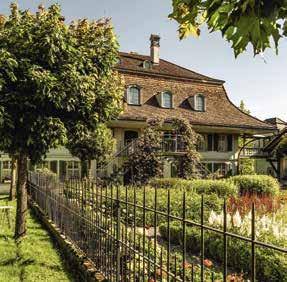
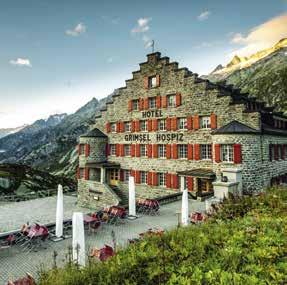
Nel 1932 la costruzione del primo hotel d’Europa con riscaldamento elettrico fece parlare moltissimo di sé. A seguito di un accurato restauro, la Grande Dame riaprì le proprie porte 80 anni dopo, con un riscaldamento ecologico proveniente dalle centrali idroelettriche.
dal since
1932
In 1932, the new hotel building caused a sensation as Europe’s first electrically heated hotel. Following comprehensive renovations, this monument has reopened its doors 80 years later – now heated using environmentally friendly waste heat from the power plants.
Lago artificiale del Grimsel, territorio naturale alpino protetto
Grimsel reservoir, a high-alpine conservation area
HERZOGENBUCHSEE HERZOGENBUCHSEE +41 (0)62 531 52 30
info@kreuz-herzogenbuchsee.ch kreuz-herzogenbuchsee.ch
La storia di questo edificio barocco racconta un grande spirito pionieristico, visto che il Kreuz è da sempre un centro sociale e culturale. Questo hotel gestito con amore include un ristorante e un bar ed è un amato punto di incontro per persone di tutte le età e un vivace luogo culturale.
The history of this Baroque building has been shaped by pioneering spirit, since the Kreuz has always been a social and cultural hub. To this day, it is a lovingly run hotel with restaurant and bar, used both as a meeting place for all ages and as a vibrant cultural centre.
dal since

Questa ricercata casa rurale con dodici camere è una delle più notevoli espressioni dell’arte carpentiera dell’Oberland bernese nel XVIII secolo. Nel ristorante rinnovato, i piatti regionali sono arricchiti con le erbe aromatiche del giardino Ricola.
dal since
The elaborately designed farmhouse with 12 guest rooms is one of the Bernese Oberland’s most impressive masterpieces of carpentry from the 18th century. In the renovated dining rooms, regional dishes are refined using herbs from the Ricola garden.

+41 (0)33 676 12 08 info@nostalgiehotel.ch nostalgiehotel.ch
Quasi alla fine del mondo, dove non c'è neanche più campo per i telefoni cellulari, si trova una piccola oasi di pace sulla Pochtenweide, nella Kiental bernese. Questo hotel nostalgico è stato costruito nel 1910 in stile chalet, come alternativa ai grand hotel della Belle Époque.
Almost at the end of the world, and away from mobile reception, an oasis of tranquillity awaits on the Pochtenweide in the Bernese Oberland’s Kiental. The nostalgic hotel was built in a chalet style in 1910 and is a homely alternative to the grandeur of the Belle Époque grand hotels.

dal since
L’elenco degli ospiti è esclusivo quanto la vista su Eiger, Mönch e Jungfrau. Al Bellevue des Alpes, che incanta gli ospiti con i suoi interni originali degli anni ’20, hanno soggiornato grandi alpinisti e celebrità del mondo culturale e sociale.
The guest list is as exclusive as the view of the Eiger, Mönch and Jungfrau. Prominent mountaineers as well as celebrities from the world of culture and society have stayed at the Bellevue des Alpes, whose preserved authentic 1920s interior never fails to captivate guests. dal since
1840 Eiger, Mönch & Jungfrau

Acquistato nel 2014 da ospiti affezionati, questa struttura ultracentenaria ha conservato il suo fascino originario. La sontuosa sala da pranzo, la terrazza soleggiata e la generosa veranda offrono una vista mozzafiato sul vicino massiccio della Jungfrau.
Bought by long-standing guests in 2014, this historic hotel is over 100 years old and has retained its original charm. The majestic dining hall, sun terrace and spacious veranda offer breathtaking views of the nearby Jungfrau massif. dal since

L’albergo castello del XIX secolo è un’importante opera di storicismo che attinge a vecchi elementi stilistici. Sul Lago di Thun, il castello è immerso in un magnifico parco e la terrazza e le camere offrono una splendida vista sull’acqua e sul Niesen.
dal since
The 19th-century castle hotel is a significant example of historicism, reflecting old style elements. Right on the shores of Lake Thun, the castle lies in a splendid park, and its terrace and rooms all afford wonderful views of the water and the Mount Niesen.

Panorama montano intorno a Thun Mountain panorama around Thun
Famille de Pourtalès
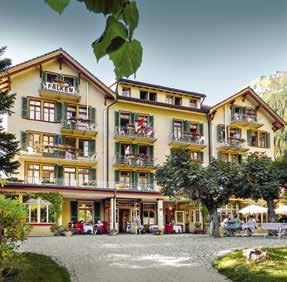
+41 (0)33 856 51 21 info@hotelfalken.com hotelfalken.com
Mangiare in una sala da pranzo del 1908 conservata nelle sue caratteristiche originali e dormire in camere arredate con stile: nell’Hotel Falken nel cuore di Wengen si rimane incantati dall’affascinante atmosfera Belle Époque, preservata con amorevole cura.
Dine in a dining room with original 1908 design and sleep in stylishly furnished guest rooms: in Hotel Falken in the heart of Wengen, the carefully preserved playful ambience of the Belle Époque captivates its guests.
Cascate nella regione Waterfalls in the region
dal since
Nella storica struttura conventuale convivono un hotel cosmopolita e un vivace monastero benedettino. Si tratta di un luogo d’energia e di ritiro unico che offre spazio per il riposo e l’ispirazione.
Within the historic monastery walls, a cosmopolitan hotel and active Benedictine monastery have come together. The unique place of peace and power spot provides space for recovery and fresh inspiration. dal since

Cortile interno del monastero (dal 1183)
Monastery courtyard (since 1183)

L’imponente casa padronale risalente a oltre 400 anni fa, con una vista stupenda sulla cima del Tödi, è una delle poche abitazioni svizzere del periodo tardo-medievale conservatasi nello stato originale.
Museo dell’abitazione, Passo del Klausen, Lago Oberblegi
The imposing 400-year-old manor house with a splendid view of the Tödi peak is one of a handful of dwellings in Switzerland from the late Middle Ages that are for the most part still in their original condition. dal since
Museum of housing, Klausen Pass, Lake Oberblegi
In questo palazzo rinascimentale e hotel biologico sopra il Lago di Costanza, a invitare al relax non sono soltanto le 25 camere eleganti e la spa con una vasca ovale del 1928, ma anche il fiabesco parco inglese del 1860, ora divenuto monumento nazionale in materia di giardini.
This Renaissance palace and organic hotel above Lake Constance not only boasts 25 stylish rooms and a spa with bathing oval from 1928 for the ultimate in relaxation, but also an enchanting English park from 1860, today a national garden monument. dal since
Zita v. Bourbon-Parma

+41 (0)81 407 22 22 info@kurhausberguen.ch kurhausberguen.ch
Con la sua generosa architettura e gli arredi originali è un vero gioiello dello stile Liberty. Il maestoso salone è tra i più preziosi della Svizzera. Oggi la struttura è un mix riuscito tra hotel e appartamenti di vacanza con sauna e vasche idromassaggio.
Tratta ferroviaria Patrimonio mondiale dell’UNESCO
A true art nouveau gem with spacious architecture and original interiors. The impressive ballroom is one of the most prized in Switzerland. Today the resort comprises a successful mixture of hotel and holiday apartments with sauna and whirlpool.
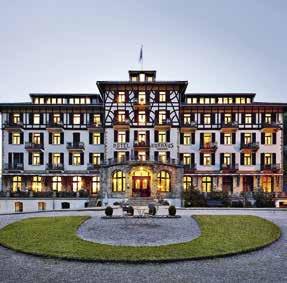
UNESCO World Heritage railway line
dal since
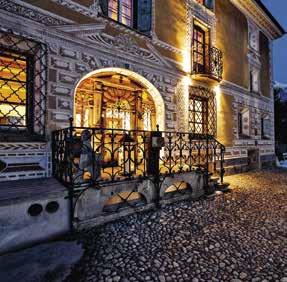
Originariamente un casale, poi un palazzo sfarzoso: nella Chesa Salis si fondono 450 anni di storia in un binomio di accoglienza rustica e grandezza aristocratica, il tutto nello spettacolare panorama montano dell’Engadina. Val Bever, giardino dell’hotel simile a un parco
Once a farmhouse, today a magnificent palazzo: the Chesa Salis blends 450 years of history with rustic cosiness and aristocratic grandeur, all in the heart of the spectacular mountain landscape of the Engadin.
dal since
Val Bever, the park-like hotel garden
+41 (0)81 258 57 57 info@stern-chur.ch stern-chur.ch
Dal 1677 l’hotel dall’atmosfera familiare, nel centro di Coira, è l’indirizzo numero uno per i buongustai: le sue prelibatezze regionali e gli eccellenti vini dei Grigioni sono noti ben oltre le mura della città.
The familial Hotel Stern in the heart of Chur has been a favourite of connoisseurs since 1677: today, the regional delicacies and fine wines from Graubünden are wellknown even outside of the city.
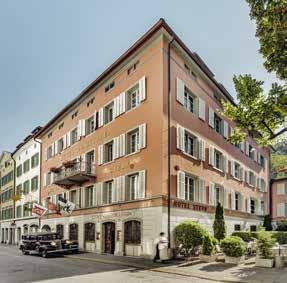
dal since
Rowan Atkinson, H. R. Giger Bernina Express, Glacier Express
Grazie alla salutare aria di montagna del luogo, la struttura fu costruita intorno al 1900 come sanatorio. Negli anni ’50 è stata convertita in hotel, ma l’aria pura resta la stessa. Oggi l’hotel è una vera oasi alpina. Nel giardino crescono oltre 5500 piante diverse.
dal since
Because of the good mountain air, the building was conceived as a sanatorium around the year 1900. It was converted into a hotel in the 1950s, though the air remains as fresh as ever. Today, the hotel is an Alpine oasis. The hotel garden is home to more than 5,500 plant species.
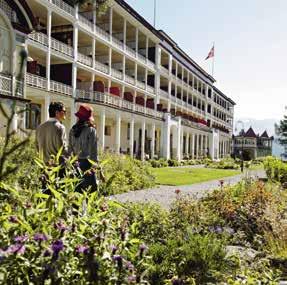
L’hotel di montagna è un giramondo senza pari: tra passato e presente, tra località termale mondana e la tranquillità delle Alpi. In passato sorgeva a St. Moritz. Alla fine del XIX secolo fu poi smontato parti e ricostruito nell’isolata Val Fex.

This mountain hotel is quite the world traveller. Between past and present, a chic spa resort and oasis of Alpine tranquillity. It could once be found in St. Moritz, but was dismantled in the 19th century and rebuilt in the remote Fex Valley. dal since
Silenzio, natura, montagne
La storica casa patrizia si trova nel cuore del villaggio montano di Fideris. La sua torre si erge fiera e racconta tante interessanti storie degli ultimi quattro secoli. Chi alloggia nella camera «Himmel» (cielo) è a contatto ravvicinato con l’ambiente storico della casa.
dal since
The historic patrician residence lies in the heart of the mountain village of Fideris. With its distinctive tower, it surely has many tales to tell from the last four centuries. A stay in the “Himmel” (heaven) room really makes you feel as if you’re close to history.

Villaggio montano di Fideris
Mountain village of Fideris
+41 (0)81 928 10 10 info@schweizerhof-flims.ch schweizerhof-flims.ch
Dal 1903 questa struttura è non solo un eccellente hotel, ma anche un luogo di cultura noto a livello internazionale. Icone come Albert Einstein e Marie Curie hanno trascorso qui l’estate e vissuto la magia della Belle Époque, ancora oggi estremamente viva.
Albert Einstein, Marie Curie
Since 1903, it has been known as not only an exceptional hotel but also a cultural centre. Icons such as Albert Einstein and Marie Curie spent their summers here and enjoyed the magic of the Belle Époque, which continues to sparkle to this day. dal since


L’hotel custodisce la sua affascinante storia in una casa engadinese del XVII secolo decorata con sgraffiti. Dal 1893 è gestito dalla famiglia Meisser. Nella sala da pranzo del 1902, dichiarata patrimonio culturale, gli ospiti possono gustare piatti regionali.
dal since
Schellenursli-Museum, Piz Buin (3312 m)
Adorned with sgraffito, the Engadin hotel dating back to the 17th century is testament to a rich history. It has been run by the Meisser family since 1893. Guests can savour regional dishes in the listed dining room dating back to 1902.

+41 (0)81 422 22 22 hotel@chesagrischuna.ch chesagrischuna.ch
Progettato come «opera omnia», il piccolo albergo diventò un punto di ritrovo del mondo culturale e intellettuale e, ben presto, una leggenda. Anche la cucina è creativa come il connubio tra architettura tradizionale e arte contemporanea.
Gene Kelly, Robert Kappa
Planned as a complete work of art, the small hotel soon became a legendary space for artists and intellectuals. Just as creative as meshing tradition and contemporaneity is the fine cuisine of the house. dal since
Chiesa di St. Jakob St. Jakob Church

Lo storico hotel ricorda uno scrigno del tesoro, ricco di storie e di storia. Particolarmente impressionante è la Sala delle Sibille con i dodici ritratti a olio di donne mitologiche. Il palazzo fu costruito nel 1682 come residenza rappresentativa del sindaco.
dal since
Sala della Sibille Room of the Sibyls
The hotel is a treasure trove of stories and history. The Room of the Sibyls is particularly impressive, with its 12 oil paintings of mythological women. The palazzo was built in 1682 as the mayor’s representative residence.
Il vecchio feudo era un ospizio e, fino al 1944, anche una stazione doganale. Ne fanno parte camere originali, in parte nello chalet costruito dal musicista Willem Mengelberg nel 1913. Zuort combina l’atmosfera di una fattoria di montagna tirolese con lo spirito della Belle Époque.
The old farmstead was a hospice and up until 1944 a customs post. The inn includes rooms true to the original style, with some of these in the chalet built by musician Willem Mengelberg in 1913. It combines the ambience of a Tyrolean highland farm with the spirit of the Belle Époque.
dal since
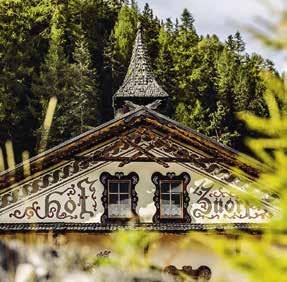
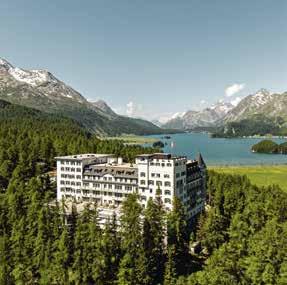
Questo hotel è a conduzione familiare da ben cinque generazioni. La struttura è un modello di tradizione alberghiera svizzera di successo: dietro la storica facciata, gli ospiti possono godersi il tocco personale con cui l’hotel viene gestito da oltre 110 anni.
dal since
Lago di Sils
Le lac de Sils
Guests today are welcomed here by the fifth generation of the same family. The hotel is a prime example of successful Swiss hotel tradition: behind the historic façade, guests can enjoy the personal way in which the hotel has been run for more than 110 years.

+41 (0)81 822 12 08 info@palazzosalis.ch palazzosalis.ch
Il palazzo trasformato in locanda 100 anni fa offre un’atmosfera unica e incantevole con le sue 16 camere, le sue magnifiche sale e il giardino con sequoie rare. Qui hanno pernottato Giovanni Segantini e Alberto Giacometti.
The palazzo, which was turned into a guest house 100 years ago, has a unique ambiance. It enchants visitors with its 16 rooms, splendid large halls and garden with rare redwood trees. Giovanni Segantini and Alberto Giacometti have both stayed here.
Cascata, ristorante, montagne Waterfall, restaurant, mountains
dal since
+41 (0)81 630 91 30 info@weiss-kreuz.ch weiss-kreuz.ch
L’attuale ingresso della locanda era l’entrata all’ostello costruito nel 1519 per i mulattieri che percorrevano la rotta transalpina Monaco-Milano. Il ristorante si trova nell’ex fienile e le scale scricchiolanti portano alle 16 accoglienti camere.
dal since
What is now the main entrance was once the entrance for pack animals in this hotel built in 1519 for muleteers on the transalpine crossing between Munich and Milan. The restaurant is in the converted hay barn, and creaking wooden stairs lead to the 16 cosy rooms.
Nucleo del villaggio di Splügen Village centre of Splügen

Circondato da un paesaggio mozzafiato l’hotel, aperto nel 1896 e tuttora di proprietà della famiglia Badrutt, non è solo il simbolo di St. Moritz, ma è anche la leggenda degli hotel svizzeri per eccellenza.
Surrounded by a breathtaking landscape, the hotel, which opened in 1896 and is still owned by the Badrutt family today, is not only a landmark of St. Moritz, but also a Swiss hotel legend.
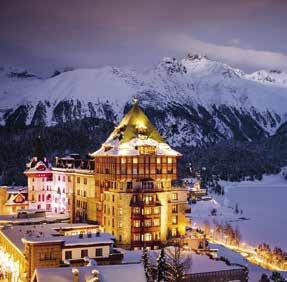
dal since
Vista sul Lago di St. Moritz
Views of Lake St. Moritz

Di qui passavano cavalieri, menestrelli, nobili, mulattieri: si tratta di un edificio ricco di tesori storici. Anche Albert Hofmann, lo scopritore dell’LSD, rimase affascinato dalla sua magia e scrisse nel libro degli ospiti: «Qui si vive una favola senza aver mangiato funghi magici.»
dal since
Over years, it has welcomed knights, minstrels, nobility and muleteers. A building filled with historic treasures. Albert Hofmann, the man who discovered LSD, was captivated by its charm. He wrote in the guest book: “Here, you can experience something magic, without the mushrooms.”
Relax e rispetto del clima: parti in vacanza con i trasporti pubblici.




Troverai ad aspettarti in hotel i bagagli che avremo ritirato a casa tua. ffs.ch/shop-bagagli
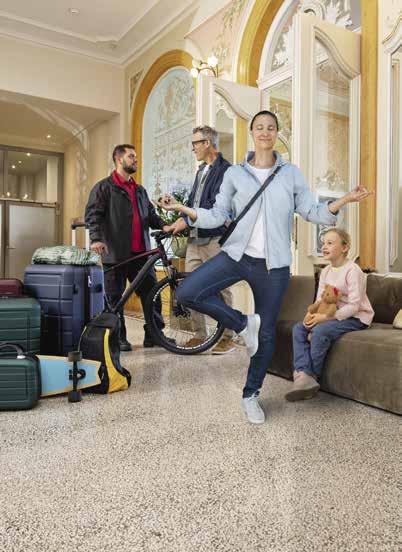
La facciata dell’hotel rivela già la sua impressionante storia. L’hotel Crusch Alva, aperto intorno al 1500, è una delle più antiche locande della Svizzera e a quel tempo era usato come una sede giuridicaqui venivano promulgate anche sentenze.
The façade of the hotel hints at its impressive history. The Hotel Crusch Alva opened in 1500 and is one of the oldest inns in Switzerland. Back then, it was used as a legal building, and was a place where judicial verdicts were passed. dal since

Albert Einstein
Restaurant Stüva

Questo palazzo Belle Époque di 125 anni gode di una posizione superba con vista panoramica sulle Alpi, dal Monte Bianco alla Jungfraujoch. Un grand hotel che brilla per la sua bellezza classica. Il ristorante Belle Époque risale al 1913 e ricorda l’epoca dei balli sontuosi.
The 125-year-old Belle Époque Palace glows in its classic beauty and is a box seat to the Alpine chain from Mont Blanc to the Jungfraujoch. The Belle Époque restaurant has been welcoming guests since 1913 and is reminiscent of the days of festive balls.
Chasseron (1600 m), Sport in estate e inverno
dal since
L’albergo purista, situato nelle mura di un ex convento cluniacense, è un’oasi di pace, raggiungibile solo a piedi, in bici o con il battello. Le 14 camere eleganti sono state ristrutturate con cura e creano un interessante contrasto con le vecchie mura.
dal since
Isola di San Pietro St. Peter’s Island
The sobre hotel within the walls of a former Cluniac monastery is an oasis of tranquillity and can only be reached on foot, by bicycle or by boat. The 14 rooms have been carefully and stylishly redesigned, creating an exciting contrast against the old monastery walls.
J. W. Goethe, Joséphine Bonaparte

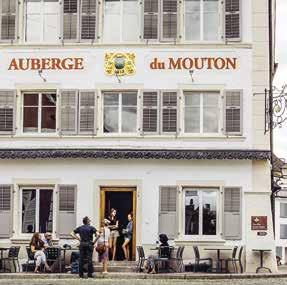
L’alloggio situato nel centro della città vecchia di Porrentruy è stato ristrutturato nel 2016 con amore per i dettagli. Il ristorante dell’hotel punta sulla cucina del territorio; in estate si può cenare in terrazza con vista sulle vivaci strade circostanti.
The inn in the historic city centre of Porrentruy was renovated in 2016 with careful attention to detail. The hotel’s own restaurant fully ascribes to the philosophy of “terroir”, or regional-based cooking; in summer, guests can dine on the terrace and watch the goings-on in the streets.
Cucina del terroir Terroir cuisine
dal since
Già citata ufficialmente nel 1357, questa romantica locanda è annoverata tra le più antiche della Svizzera centrale. Ricostruita nel 1788, in molti dettagli ricorda la gloriosa epoca del traffico con le diligenze sul Gottardo.
dal since
First mentioned in historic documents dating back to 1357, this romantic guest house is one of the oldest in Central Switzerland. Rebuilt in 1788, many of the current building’s features hark back to the golden age of the stage coach on the Gotthard.

+41 (0)41 488 11 66 willkommen@kurhaus-fluehli.ch kurhaus-fluehli.ch
Nella Biosfera UNESCO dell’Entlebuch questo hotel ultracentenario brilla di un nuovo splendore dopo una conversione rispettosa della struttura originale e un’ampia ristrutturazione. Abbina elementi storici conservati con cura a un comfort moderno e un’ospitalità unica.
In the UNESCO Biosphere Entlebuch, the 100-year-old health resort now shines in new splendour after a slight conversion and comprehensive renovation. It offers the perfect combination of carefully preserved historic elements with modern comfort and unique hospitality. dal since
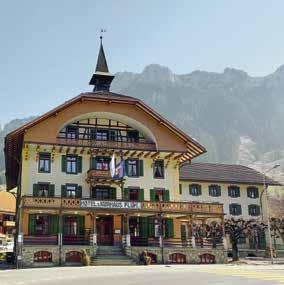
Questo gioiello si trova in un luogo d’energia nei pressi del centro geografico della Svizzera. L’hotel è un monumento storico tutelato; i suoi saloni accoglienti e la storica sala da pranzo con la veranda lunga 47 metri invitano al riposo e ai piaceri della tavola.
dal since
This jewel is located at an energy point not far from the geographic centre of Switzerland. The hotel is a listed building; various cosy lounges and the historic dining room with its 47-metre veranda are perfect places to relax and unwind.
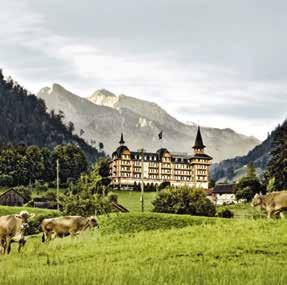
wilden-mann.ch
Il Wilden Mann di Lucerna accoglie i suoi ospiti da 500 anni. In questo lasso di tempo l’affascinante hotel nel cuore della città si è espanso su sette case antiche annidate, arredate e decorate con amorevole attenzione per i dettagli.
Guests have been welcomed at the Wilden Mann in Lucerne for the past 500 years. During this time, the charming hotel in the heart of the city has grown to fill seven interconnected old town houses, which have been lovingly designed and furnished.
dal since

Nelle antiche e suggestive mura del monastero, non sono solo le 14 eleganti camere dell’hotel a suscitare gioia. L’eredità culinaria delle Alpi si respira e si percepisce nel grande ristorante, nel negozio del monastero e anche durante i corsi di cucina.
dal since
Housed within the old, atmospheric monastery walls, the 14 stylish hotel rooms are a treat in themselves. The culinary heritage of the Alps can be savoured in the spacious restaurant, monastery shop and cookery school kitchen.

Passeggiata nella natura tra 250 varietà di piante «commestibili»
Walking in the “edible” landscape and snacking from 250 plant varieties
Questo hotel con ristorante all’aperto non potrebbe trovarsi in una posizione migliore: con i piedi che quasi sfiorano l’acqua, lo sguardo cade sulle delicate onde del Lago di Lucerna. In vicinanza si vedono anche i battelli che attraccano e i treni che salgono sul Rigi.
Gita a Lucerna, escursione sul Rigi, tour con e-bike
The hotel, along with its garden restaurant, could not be in a more beautiful location: sitting right on the water, it invites guests to look out across the soft waves of Lake Lucerne. Also nearby, there are boats docking and trains that go up to the Rigi.

City trip to Lucerne, Rigi hike, e-bike tour
dal since
+41 (0)91 785 40 40 info@monteverita.org monteverita.org
Il Monte Verità è da sempre un luogo foriero di arte e di idee. L’albergo costruito in stile Bauhaus è un luogo di ispirazione non solo per la sobria eleganza, ma anche per il suo ristorante panoramico, i musei, la casa da tè giapponese nel giardino zen e il parco.
dal since
Casa da tè, giardino, parco Tea house, garden, park
Monte Verità was and is a place of ideas and the arts. Guests can find inspiration in the sleek elegance of the Albergo built in the Bauhaus style and in the panoramic restaurant, museums, Japanese tea house and Zen garden, as well as the park.

+41 (0)91 608 32 65 info@posta-astano.ch posta-astano.ch
In fondo al Malcantone selvaggio e romantico, l’edificio dell’ex ufficio postale è documentato come albergo dal 1888. Finora l’hotel ha mantenuto la sua caratteristica di tipica casa ticinese.
Deep in the wildly romantic Malcantone region, this former post office building has been a hotel since 1888. To this day, the hotel has retained the character of the typical Ticino house.

Monte Lema, Miniera d’oro di Sessa
dal since
La romantica dimora patrizia costruita 200 anni fa è un’isola di benessere dal fascino mediterraneo. La struttura dall’atmosfera familiare vanta 18 camere arredate singolarmente e un meraviglioso giardino con piscina.
The romantic, 200-year-old patrician residence is an oasis of well-being with Mediterranean charm. The familial-run hotel has 18 rooms with individual designs and an enchanting garden with pool. dal since
Parco San Grato
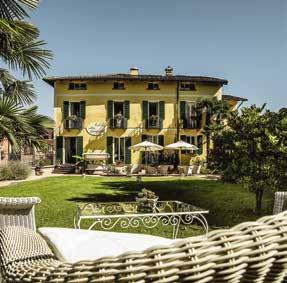
Remigio Gamboni ha costruito nel 1700 questa casa patrizia lombarda, ristrutturata nel 2001 con uno stile fedele all’originale e dotata di cinque camere piene di fascino. Già l’artista dadaista Max Ernst e l’autore Elias Canetti hanno trovato qui la loro ispirazione.
Max Ernst, Elias Canetti
Remigio Gamboni built this Lombard patrician residence around 1700, and it was restored to its original style in 2001 with five charming rooms. Dada artists Max Ernst and Elias Canetti found inspiration within these walls. dal since
Architettura a Comologno Architecture in Comologno

Circondata da un paesaggio autentico e da alberi secolari, la villa coniuga i decenni passati con nove camere arredate con gusto. Il piacere dell’arte, dei concerti o della cucina regionale si assapora in uno scrigno di pace.
Surrounded by an authentic landscape and ancient trees, the villa combines past decades in nine tastefully furnished rooms. The enjoyment of art, concerts or regional cuisine is followed by restful silence. dal since Chiesa di Mario Botta a Mogno Church by Mario Botta in Mogno
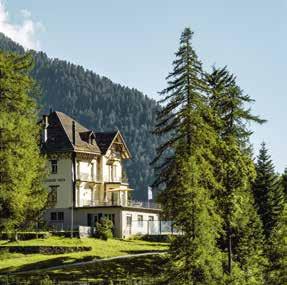
Lo storico palazzo in stile Belle Époque è un luogo affascinante e dall’atmosfera senza tempo. Un’attenzione particolare è riservata alla gastronomia, con diverse proposte dal fine dining ai piatti mediterranei e ai cocktail d’autore.
The historic Belle Époque-style palace is a charming place of discreet luxury. Special attention is focused on gastronomy, with various proposals from fine dining to Mediterranean dishes and signature cocktails. dal since

Nel maestoso hotel di montagna del 1896 ci si sente trasportati indietro ai tempi d’oro dell’alpinismo. L’hotel a conduzione familiare con la facciata in pietra e legno si trova nel cuore di una foresta di pini cembri in mezzo a montagne imponenti e risveglia un nuovo spirito di avventura.
dal since
Staying at this noble mountain hotel from 1896 is like a journey through time to the heyday of Alpine mountaineering. The family-run hotel with its stone and timber façade lies in the heart of a stone pine forest amidst the impressive mountains, awakening a new thirst for adventure.
Terrazza panoramica, J. Baker Bar Panoramic terrace, J. Baker Bar


Con le sue sale e camere restaurate con cura, questo hotel ricco di tradizione del XIX secolo invita a compiere un viaggio nel tempo dal Biedermeier alla Belle Époque fino al dopoguerra. Si tratta di un vero e proprio gioiello nella «Valle dei tesori nascosti».
The 19th-century hotel steeped in tradition invites guests on a journey through time with lovingly restored lounges and rooms from the Biedermeier period and the Belle Époque to the post-war era. In the “valley of hidden treasures”, it is undoubtedly a special gem.
Parco naturale della Binntal Binntal Nature Park
dal since
Nell’antica sede signorile ai piedi dei passi Novena, Grimsel e Furka, l’ospitalità è di casa da secoli: anche Goethe ha soggiornato qui. Oggi nel ristorante le specialità regionali vengono servite su vassoi d’argento.
dal since
In the former regal residence at the foot of the Nufenen, Grimsel and Furka high-mountain passes, hospitality has been writ large for centuries. Even Goethe was known to stay here. Today, the restaurant serves regional specialities on silver trays.

Pista di sci di fondo (100 km) Cross-country ski trail (100 km)
J. W. Goethe

Edward Whymper, il primo a scalare il Cervino nel 1865, soggiornò in questo storico hotel con 41 camere e suite. L’edificio incarna ancora il fascino della Belle Époque alpina, ma con tutte le comodità di oggi.
Edward Whymper stayed in the historic hotel with 41 rooms and suites when he was the first to climb the Matterhorn in 1865. The building still embodies the charm of the alpine Belle Époque, but with all of today’s modern conveniences. dal since
Il grand hotel costruito sulle fondamenta di una villa romana, con le sue camere arredate fedelmente con mobili d’epoca, rispecchia lo stile di vita del tardo XIX secolo con un perfetto equilibrio tra storia della cultura ed eccellente tradizione alberghiera.
dal since
The rooms of this grand hotel built on the foundations of a Roman villa are decorated in their original style with historic furniture from the 19th century – striking a perfect balance between cultural history and grand hotel tradition.
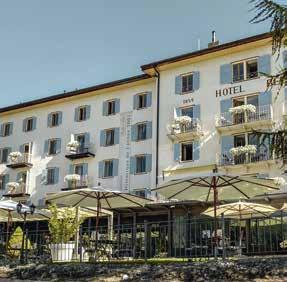

Costruito originariamente come casale di un viticoltore, il Masson si trova nel cuore dei vigneti. Ancora oggi l’hotel, uno dei più antichi e affascinanti di Montreux, offre una vista mozzafiato sul Lago di Ginevra ed emana un fascino mediterraneo.
The Masson was built as a vintner’s home and was originally surrounded by vineyards. As one of the oldest in Montreux, this charming hotel still offers breathtaking views of Lake Geneva today and exudes Mediterranean charm. dal since
Château de Chillon


La grande locanda con 14 camere si trova nelle vicinanze di Glacier 3000, circondata dalle alpi vodesi. Arredata da un mercante d’arte parigino, presenta mobili antichi e dipinti storici che conferiscono all’ambiente un fascino particolare.
The great 14-room guest house is situated in the heart of the Vaud Alps, not far from Glacier 3000. It was decorated by a Parisian art dealer – antique furniture and paintings on cultural history lend it a refined charm.
dal since
Glacier 3000, terrazza con vista
Glacier 3000, terrace with a view
REGION +41 (0)56 200 02 00 info@blume-baden.ch blume-baden.ch
Dietro alla facciata barocca si nasconde un’elegante costruzione del 1873 con il suo cortile impressionante e la zona spa piccola, ma raffinata, con vasche da bagno come quelle del XIX secolo.
Behind the Baroque façade lies an elegant building dating from 1873 with a lightfilled courtyard and the small but splendid spa area with baths true to the original style from the 19th century.

dal since
Villa Langmatt, Fortyseven Wellness-Therme
+41 (0)43 411 11 22 gasthof@hirschen-eglisau.ch hirschen-eglisau.ch
Oltre alla sua splendida posizione con magnifica vista diretta sul Reno, la locanda ristrutturata amorevolmente offre sette camere e suite nello stile dal XVII al XIX secolo, ma con tutti i comfort del nostro tempo. L’equilibrio fra tradizione e modernità trova qui la sua perfezione.
J. W. GoetheIn addition to its beautiful location with direct views of the Rhine, this carefully restored guest house offers seven rooms and suites in the styles of the 17th to 19th centuries. The balance between tradition and modernity has been perfectly struck here. dal since
Viaggio in battello sul Reno Cruising on the Rhine

Una pietra preziosa sul lato soleggiato del Lago di Zurigo: fantastica posizione in riva all’acqua, simbiosi perfetta di struttura edilizia storica e architettura moderna, il Sonne con le sue 40 camere eleganti irradia una bellezza senza tempo.
dal since
80 opere d’arte nell’hotel 80 paintings in the hotel
An emerald on the sunny side of Lake Zurich: with its 40 stylish rooms and splendid location, the Sonne perfectly combines a historic building with contemporary architecture, radiating timeless beauty.
C. G. Jung, Franz Kafka
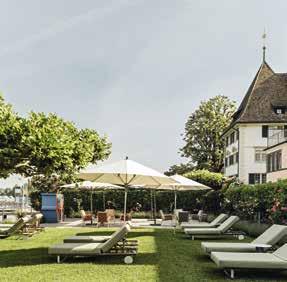
L’Hirschen è una delle case signorili più significative del XVII secolo nel paesaggio zurighese. La cucina premiata, il vino locale e le stanze in gran parte storiche rendono questo posto così unico nella regione. Cappella di San Gallo, paesaggio lacustre, case caratteristiche di Stammheim
The Hirschen is one of the finest examples of a 17th-century town house in the landscape of Zurich. The award-winning kitchen, local wines and mostly historic rooms are what make this place so unique in the region. dal since
Gallus chapel, lake landscape, village of Stammheim

Il Gyrenbad è un vero gioiello: il leggendario albergo di campagna, nel cuore di un paesaggio idilliaco, è uno dei più tradizionali e belli della Svizzera ed è stato premiato nel 1997 come primo «Hotel storico dell’anno». I gestori riempiono questo luogo di passione e cultura.
dal since
Giardino termale storico Historical spa garden
The jewel of Gyrenbad: this iconic country inn is situated in an idyllic environment and is one of the most original and beautiful in Switzerland. In 1997, it was the first hotel to be named “Historic Hotel of the Year”. The hosts fill the hotel with both culture and heart.

+41 (0)44 266 10 10 info@marktgassehotel.ch marktgassehotel.ch
Il Marktgasse è una delle locande più antiche della città sulla Limmat ed emana ancora un fascino senza tempo. Connubio di design elegante e gastronomia di punta dello chef Andreas Caminada, è un luogo di culto nel centro storico di Zurigo.
Limmat, centro storico, Lago di Zurigo
The Marktgasse is one of the oldest guest houses in Zurich and still boasts a timeless charm. Combined with tasteful design and top gastronomy by Andreas Caminada, the guest house has cult status in Zurich’s old town. dal since
Limmat, old town, Lake Zurich

Companies marked with the Swisstainable insignia are committed to the responsible use of resources in Switzerland as a travel destination.
MySwitzerland.com/swisstainable
hotelleriesuisse.ch raiffeisen.ch swiss.com sbb.ch
mystsnet.com
americanexpress.ch coop.ch europcar.ch victorinox.com
gastrosuisse.ch cheesesfromswitzerland.com
swisstravelcenter.ch gubelin.com bmc-switzerland.com appenzellerbier.ch hertz.ch harley-davidson.com
mammut.com landquartfashion outlet.com
kambly.com swica.ch
kirchhofer.com
zuerich-airport.com zurich.ch rausch.ch whes.ch
swissinfo.ch
swisseducation.com swissrent.com swiss-ski-school.ch visana.ch swisswine.ch
Recommended by Switzerland Tourism. MySwitzerland.com
Publisher Switzerland Tourism MySwitzerland.com
Production, Concept & Text Transhelvetica, Passaport AG Pia & Jon Bollmann Laura Meier | Max Wild Design Anna Sarcletti transhelvetica.ch passaport.ch
Switzerland Tourism Anouk Blum | Annika Grünig | Sarah Krauer | Susanne Berther
Illustration Mira Gisler, miragisler.ch
Text (Zeitreise) Roland Flückinger
Proofreading Carola Bächi & Flexipool carolabaechi.ch
Photography Juliette Chretien juliettechretien.ch
Cover Photography (Schloss Schadau, Thun) Jonathan Ducrest jonathanducrest.com
All other photos provided by Switzerland Tourism and its partners.
Copyright Switzerland Tourism, all rights reserved.
Edition January 2023 Print run 45 000 Languages de | fr | it | en Printer Multicolor Print AG multicolorprint.ch
There are two hotel classification systems in Switzerland. You will find information on both systems at: hotelleriesuisse.ch gastrosuisse.ch







